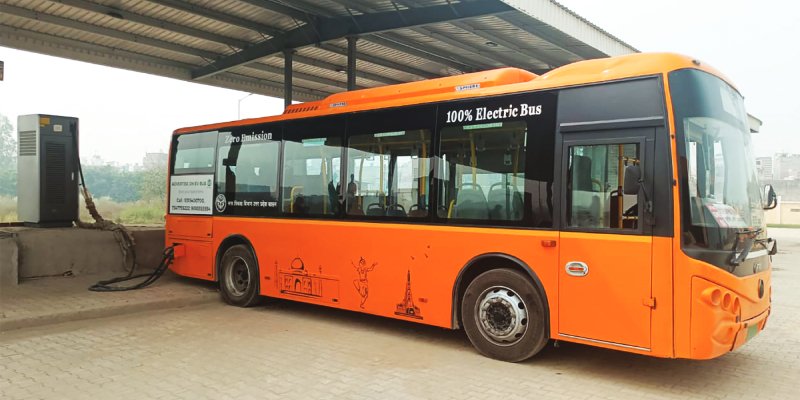
Shamik Joshi, Head-Mobility, Amnex Infotechnologies Pvt Ltd
India has set an ambitious target of cutting its emission to net zero by 2070. As a result, Electric Vehicles are gaining momentum. The government itself has started taking firm steps in the direction by replacing the traditional buses with E-buses. Writes Shamik Joshi, Head-Mobility, Amnex Infotechnologies Pvt Ltd.
However, the EV sector is still in its nascent stage and facing multiple growth challenges for large scalability due to high upfront & battery costs and inadequate charging infrastructure. As per the latest available statistics, there are 2466 EV charging stations in India across 273 cities compared to China, having over 1.15 million public EV charging stations. China took the world by surprise by successfully building 87,000 new public EV charging stations in a short span of one month in May 2022. The country aims to replace 40% of its vehicles with EVs by 2030. Europe, another frontrunner in the EV race, has set up a massive infrastructure of 150k charging stations. Their target is to set up 2.8 million EV stations by 2030. In India, this kind of aggression in EV adoption is missing.
Vehicle range and battery charging are the most pressing issues when it comes to replacing ICE buses with EV buses. Longer charging duration makes bus scheduling extremely difficult for the same service levels. For example, refuelling ICE buses takes just 10-15 minutes. On the other hand, E-bus charging takes hours. Therefore, it becomes crucial for authorities to keep track of the bus’s range and state of charge while allocating a route and time. Incidents like midway breakdowns may further endorse public transportation as unreliable and steer commuters away from using them.

Battery swapping emerges as an attractive alternative. However, the lack of battery standardization makes it far-fetched, given that public transport buses are provided by different OEMs.
Managing an electric fleet has its own set of challenges- like energy costs, depot operations and on-site DER (Distributed Energy Resources). However, technology can provide a simple solution to these complex problems. With advanced ITMS (Intelligent Transit Management System) solutions, public transport authorities can easily upgrade their current fleet to a new electric fleet.
ITMS, an intelligent software platform, can help manage electric buses smartly and optimally by automatically keeping track of the bus’s schedule, state of charge, vehicle range and allocated routes. It also helps authorities in scheduling vehicle maintenance to optimize bus performance. Moreover, providing valuable insights, it helps operators take corrective & preventive measures to enhance the safety of the commuters.
In an era when technology is redefining mobility and public transport, Amnex has emerged as a market leader with over 20 ITMS projects across the country. Amnex’s ITMS solution Locomate comprises all the features required for smooth and hassle-free EV fleet management.
Here is how ITMS can empower transit operators and authorities:
Managing EV charging schedule: With charging monitoring algorithms, ITMS ensures that buses are charged during lull periods. This helps authorities save energy costs and charge faster due to less strain on power grids. In addition, Amnex can provide customized solutions to ensure that buses are ready to run for the routes they are allocated the next day.
Monitoring and Managing State of Charge (SoC): Assigning each bus a unique vehicle ID, ITMS can help authorities keep track of each bus’s state of charge remotely. It also displays how much time it will take to charge the bus fully. This empowers authorities in dynamic rescheduling of the buses if they are insufficiently charged.
Cost optimization: Providing insights into the overall fleet’s state of charge & availability, ITMS solutions help authorities create an operating strategy to reduce operational costs & impact on the distribution grid.
API Integration: Amnex’s ITMS solutions also provide an API integration facility to establish seamless functions with telematics partners, depot operators and various business systems involved in fleet management.
Efficient DER management: Amnex’s customized ITMS solutions can help manage Distributed Energy Resources (DER) by enhancing coordination and flexibility between different vendors. It reduces stress on the existing network infrastructure to ensure that energy resources are available when required.
Integrating ITMS solutions with E-buses will instil confidence in commuters and change the way public transport is perceived in India. India is on the brink of an EV revolution, and ITMS solutions can ensure efficient EV utilization.
 TrafficInfraTech Magazine Linking People Places & Progress
TrafficInfraTech Magazine Linking People Places & Progress